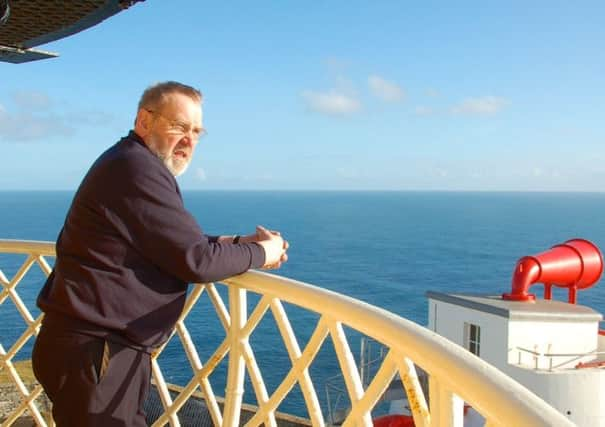Blast from the past: Sumburgh foghorn sounds again


Now, almost 30 years later, the Sumburgh lighthouse foghorn has been painstakingly restored and will once again issue reverberating blasts that can be heard up to 20 miles away.
Work to bring the foghorn back to life was carried out by Brian Johnson, a former lighthouse keeper and engineer with the Northern Lighthouse Board (NLB). He has spent the past few years restoring the mechanics and making the Sumburgh model the only operational foghorn of its type in the UK.
Advertisement
Hide AdAdvertisement
Hide AdDriven by a diesel Kelvin engine, the foghorn is controlled by an air-driven clockwork mechanism, which operates valves in the correct sequence, and at the correct time.
Johnson is the only lighthouseman now in Shetland with responsibility for keeping all the isles’ lighthouses in running order.
Parts of the refurbished foghorn were cannibalised from the Bressay foghorn and donated from the Fraserburgh lighthouse museum. According to Johnson it is a “very simple and efficient” mechanism.
“Obviously being a technician for number of years with the lighthouse board I was able to overhaul the engines,” he said. “The situation was the engines in the engine room went in in the early 1950s and were not the originals.
“So when I went to work on them everything was there. It was all as it was when they stopped, but with the passage of time they needed restoration to get it working.
“It was just what I used to do when I was an engineering with the Lighthouse Board.
“I was delighted to hear her sounding again after such a long time. On a good day it can be heard as far away as Fair Isle.”
Sumburgh lighthouse, built in 1921, was one of dozens in the country designed by Robert Stevenson, grandfather of the writer, Robert Louis Stevenson. Stevenson snr assessed the area on his first visit and declared it as a suitable site for a lighthouse. The distinctive red foghorn came along some decades later, in 1905, and was built to last a century.
Advertisement
Hide AdAdvertisement
Hide AdPreviously, a bell was used to warn mariners of potential danger. The implementation of the foghorn was a big improvement, as the sound could be heard throughout the Shetland islands in poor visibility.
When shipping began using global positioning satellite technology, the need for foghorns became, like lighthouse keepers, outdated. Sumburgh was one of the last to be switched off.
When Shetland Amenity Trust approved a £4.5 million refurbishment of the lighthouse, one of the most photographed buildings in the islands and an iconic sight for those flying into the nearby airport, the decision was made to bring the foghorn back to life. Its restoration has just been completed.
Amenity trust chairman Brian Gregson said: “It is quite remarkable to hear this foghorn again. As far as we know, it is the only one that is still working. For anyone who has heard one before it is an emotional experience in that it brings back memories – and for anyone who has never heard it before it must be quite amazing.”
Last year almost 8,000 people visited the new-look Sumburgh Head lighthouse for its opening season. The location is also home to hundreds of thousands of seabirds, including some of the largest populations in the world of puffins, fulmars and guillemots.
Sumburgh Lighthouse was constructed in 1821 by Peterhead building contractor John Reid. This was the first lighthouse in Shetland and Stevenson’s eighth in total. It is now a Category A listed building.
Elevated 91 metres above sea level, the light is visible for up to 23 nautical miles and flashes every 30 seconds.
The light is Stevenson’s equiangular refractor, which has 26 reflectors instead of the normal 21.
Advertisement
Hide AdAdvertisement
Hide AdThe light was fully automated in 1991 and ownership of the lighthouse buildings passed into private hands. In 1994 the area was designated as an RSPB nature reserve and the local office was relocated to Sumburgh Head in 1996.
In 2002 Shetland Amenity Trust purchased the lighthouse buildings and began offering an accommodation service as part of Shetland Lighthouse Holidays. The light and tower still remain under the ownership of the Northern Lighthouse Board.
In June 2014 the restored buildings and the newly established visitor attraction was opened to the public by the Princess Royal, in her capacity as Patron of the Northern Lighthouse Board.
FOLLOW US
SCOTSMAN TABLET AND MOBILE APPS